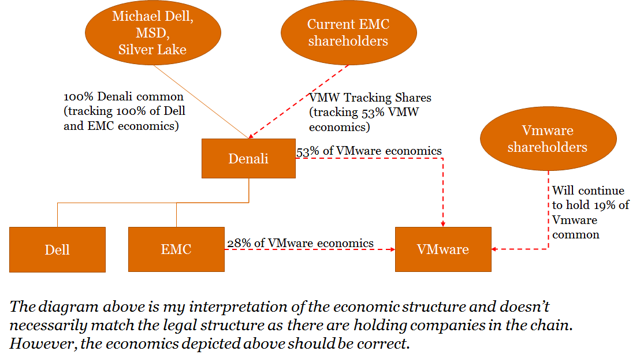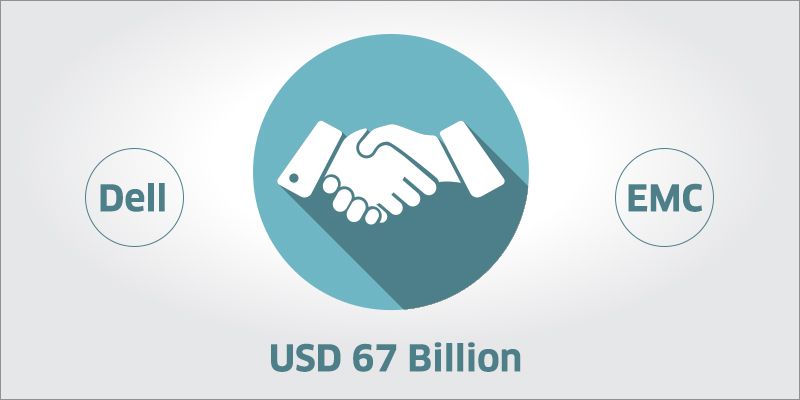

Industry experts claim that Dell could also forgo the tracking stock portion of the merger, leaving the deal valued at around $50 billion, yet this outcome is less than certain. Become a cloud architect to accelerate your journey to the cloud by Dell Technologies Cloud Architect certification which is Based on an open, robust.

This means that Dell's investors must raise around $40 billion to effectively fund this Dell-EMC merger, John Shinal at USA Today explained. Since this market change, EMC's gain is now valued at $47.2 billion. Since this time, however, shares are down.Ī major element of this mind-blowing deal, The Register's Chris Mellor wrote, centered around EMC shareholders receiving $24.05 cash, along with access to VMware tracking stock, which was then valued at $9.10 but has seen plummeted to a value of near zero. Before the deal, VMware's shares were valued at $82.09, but have since fallen by a 40 percent to $49.20. In the months preceding the deal, EMC stock was up to around $28.35 due to shareholder anticipation. Last October, technology giant Dell announced it would buy the multinational data storage company EMC in a monumental merger deal worth $67 billion. With CBT enabled we can go ahead and start using Networker with CBT capabilities which will really decrease the amount of time it takes to create backups of VMs.JanuWhat does VMware’s plummeting tracking stock value mean for the Dell-EMC deal? You must use a more traditional backup client style backup when backing up VMs with independent persistent disks. Networker will skip backing these types of disk up. Another point to bring up with independent persistent disks, particular to the use of Networker and VADP (vStorage APIs for Data Protection) in general, is it is not supported. Any VMs configured with independent persistent disks will need to be powered off and powered back on again. Keep in mind, though, if you have independent persistent disks configured you cannot create snapshots. Once it’s complete just go ahead and remove it. If we don’t want down time then we can create a snapshot of the VM. By doing it through the command line we can leave the VM powered on, but we still need some way to apply it. If we were to enable CBT using the vCenter client as described in this KB article we would need to power off the VM first. If this were a script we’d have to somehow create a way to read in VMs and check for the hardware version. It then applies that new config to the VM you’re currently working with. This essentially assigns the VM to the $vm variable and then creates a config where CBT is enabled. Where VM01 is the name of the VM in which you are enabling CBT. $vmConfigSpec.chageTrackingEnabled = $true Where vCenter is the name of your vCenter server. Now we can move on to the commands.įirst connect to your vCenter server by typing: Connect-VIServer vCenter Once that’s running go through the rest of the guide to make sure it’s set up properly. You can find more information on that here.
EMC TRACKING INSTALL
If you don’t already have it, you need to download and install VMware PowerCLI. In this article I’ll include the commands you need to simply enable CBT on a powered on VM. Obviously anything we can do through PowerCLI can also be scripted and tweaked as we like. The Networker VMware integration guide includes some methods for doing this, however there is a way to use VMware PowerCLI to do this as well. However, recently I was working with a coworker who was installing EMC Networker, and we discovered we would need to enable CBT somewhat manually. For example, if you’re running something like Veeam, a very popular virtual backup solution, that product will automatically enable CBT. In some cases, there is no need to worry. Though CBT is a feature present on more recent versions of VMware VMs, this feature is not automatically enabled. When that VM is backed up again, and CBT is enabled, the backup will only need to copy the changed blocks. Basically, VMware can keep track of disk sectors that have changed since the last backup. CBT is available if you’re running ESX 4.0 or higher with hardware version 7 or higher on the VM. Posted on MaKeith Ward Senior Editor & WriterĬhanged Block Tracking (CBT) is a feature that has been around for a while within VMware virtual machines. Featured, Virtualization Software, VMware Using vSphere Changed Block Tracking with EMC Networker Backup


 0 kommentar(er)
0 kommentar(er)
